FCAT: The Evolution of Frame Interval Benchmarking, Part 1
by Ryan Smith on March 27, 2013 9:00 AM ESTEnter FCAT
In our comprehensive look at stuttering and FRAPS, we laid out what our ideal method would be for measuring frame intervals. Ideally we would like to be able to tag a frame from the start of the rendering pipeline to the end, comparing frames as they come in and out of the rendering pipeline by time stamping frames and then comparing the intervals in those time stamps to the intervals between the frames at the end of the rendering pipeline when they are displayed. Ideally, these two intervals would match up (or be close enough), with the simulation time between frames coming at an even pace, and the frame interval itself coming at an even pace.
Of course in the real world this isn’t quite impossible, but it’s highly impractical due to the fact that it requires the participation and assistance of the application itself to write the time stamps (by the time draw calls are being made, it’s too late). In lieu of that, simply being able to look at the end of the rendering pipeline would be a major benefit. After all, the end of the rendering pipeline is where frame swaps actually happen, and it is the position in the rendering pipeline that best describes what the user is seeing. If FRAPS isn’t enough because it can only see the start of the rendering pipeline, then the logical next step is to look at the end of the rendering pipeline instead.
This brings us to the subject of today’s article, FCAT, the Frame Capture Analysis Tool.
As we mentioned in our look at stuttering yesterday, as it turns out both NVIDIA and AMD agree with the fundamental problem of trying to judge frame intervals from the start of the rendering pipeline. For the past couple of years NVIDIA has been working on an alternative tool to measure frame latency at the end of the rendering pipeline, and at long last they are releasing this tool to reviewers and the public. This tool is FCAT.
So what is FCAT? FCAT is essentially a collection of tools, but at its most fundamental level FCAT is a simple, yet ingenious method to measure frame latency at the end of the rendering pipeline. Rather than attempting to tap into the video drivers themselves – a process inherently fraught with problems if you’re intending to do it in a vendor-neutral manner that works across all video cards – through FCAT NVIDIA can do true frame analysis, capturing individual frames and looking at them to determine when a buffer swap occurred, and in turn using that to measure the frame interval.
How FCAT Works
So how does FCAT work? FCAT is essentially a 2 part solution. We’ll dive into greater detail on this in part 2 of our FCAT article, but in summary, due to the inner-workings of video cards, monitors, and PC capture cards, both monitors and PC capture cards work at fixed intervals. Regardless of the frame rate an application is running at, most PC LCD monitors operate at a 60Hz refresh interval. In the case of v-sync this means buffer swaps are synchronized with the refresh interval (which among other things caps the framerate at 60fps), but when v-sync is disabled, buffer swaps can occur in the middle of a refresh. As a result any given refresh interval can be composed of multiple frames. This makes it possible to display well over 60fps on what’s otherwise a 60Hz monitor, with the end result being that multiple frames can be in one refresh interval.
PC capture cards work on the same principle, and just as how a monitor would refresh at 60Hz a PC capture card will capture at 60Hz. The end result being that while a PC capture card can’t see more than 60 whole frames, it can see parts of those frames, and being able to see parts of frames is good enough. In fact it sees the same parts of those frames that a user would see, since the 60Hz refresh rate on a monitor causes the same effect.
Ultimately by capturing frames and analyzing them, it is possible to tell how many frames were delivered in any given refresh interval, and furthermore by counting the time between those partial frames and comparing it to the refresh interval, it is possible to compute just how long the frame interval was and how long any individual frame was visible.
Of course doing this on a raw game feed would be difficult in the best of situations. As a simple thought experiment, consider a game where the player isn’t moving. If nothing changes in the image, how is one to be able to tell if a new frame has been delivered or not?
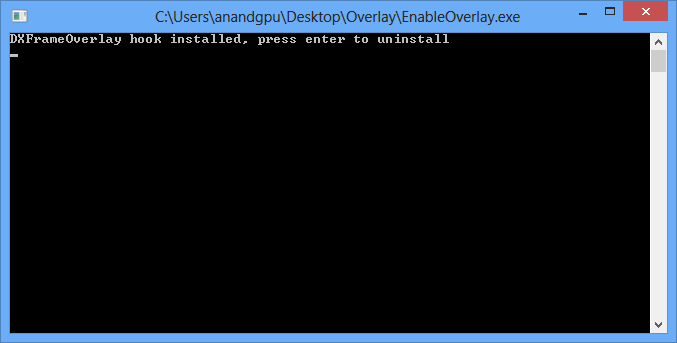
The solution to this is in the first-half of FCAT, the overlay tool. The overlay tool at its most basic level is a utility that color-codes each frame entering the rendering pipeline. By tagging frames with color bars, it is possible to tell apart individual frames by looking at the color bars. Regardless of the action on the screen (or lack thereof), the color bars will change with each successive frame, making each frame clear and obvious.
On a technical level, the FCAT overlay tool ends up working almost identically to video game overlays as we see with FRAPS, MSI Afterburner, and other tools that insert basic overlays into games. In all of these cases, these tools are attaching themselves to the start of the rendering pipeline, intercepting the Present call, adding their own draw commands for their overlay, and then finally passing on the Present call. The end result is that much like how FRAPS is able to quickly and simply monitor framerates and draw overlays, the FCAT overlay tool is able to quickly insert the necessary color bars, and to do so without ever touching the GPU or video drivers.
With the frames suitably tagged, the other half of the FCAT solution comes into play, the extractor tool. By using a PC capture card, the entire run of a benchmark can be captured and recorded to video for analysis. The extractor tool in turn is what’s responsible for looking at the color bars the overlay tool inserts, parsing the data from a video file to find the individual frames and calculate the frame intervals. Though not the easiest thing to code, conceptually this process is easy; the tool is merely loading a frame, analyzing each line of the color bar, finding the points where the color bar changes, and then recording those instances.
This ultimately results in a Tab Seperated Values file that contains a list of frames, when they occurred, the color bar they were attached to, and more. From here it is possible to then further process the data to calculate the frame intervals.
The end result of this process is that through the use of marking frames, capturing the output of a video card, and then analyzing that output, it is possible to objectively and quantitatively measure the output of a video card as an end-user would see it. This process doesn’t answer the subjective questions for us – mainly, how much stutter is enough to be noticed – but it gives us numbers that we can use to determine those answers ourselves.
Finally, for the purposes of this article we’ll be glossing over the analysis portion of FCAT, but we’ll quickly mention it. Along with the overlay and extractor tools, FCAT also includes a tool to analyze the output of the extractor tool, from which it can generate graphs, identify so-called “runt” frames, and more. The analysis tool is not strictly necessary to use FCAT – one can always do their own analysis – but the analysis tool does simplify the use of the suite by quickly and conveniently handling that last step of the process. We’ll get into the analysis tool in much greater detail in part 2 of our article, where we can apply it to our full suite of test results to better understand what it looks for and what it’s representing.



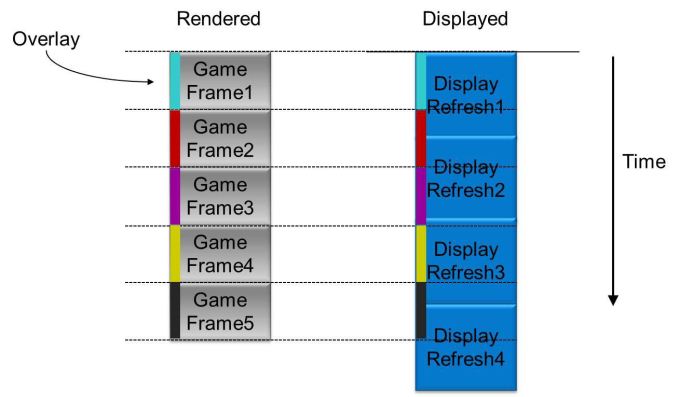
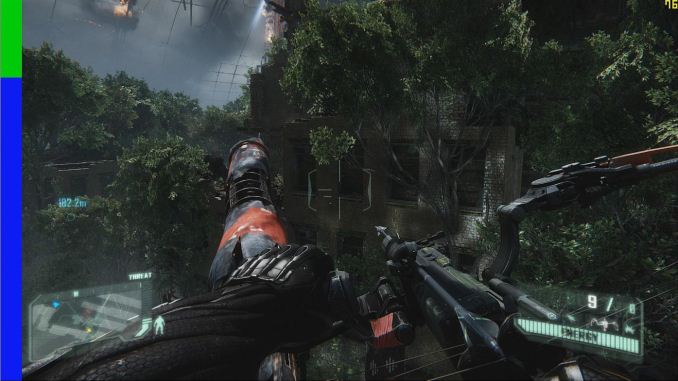
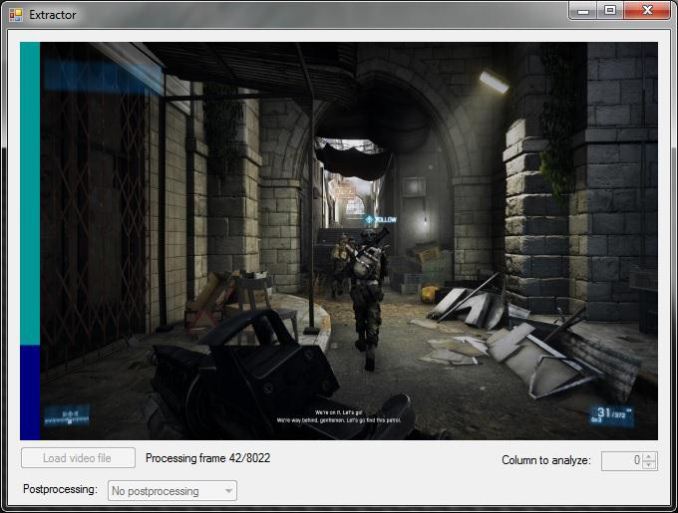
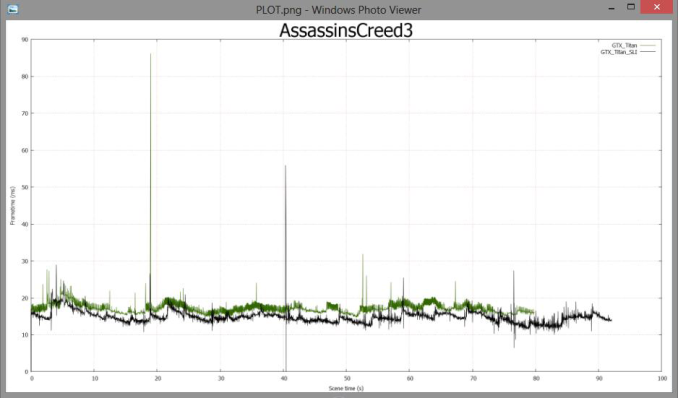








88 Comments
View All Comments
Unwinder - Friday, March 29, 2013 - link
Thanks, Ryan. I've already received hex reference colors from NV. MSI Afterburner with FCAT overlay support (3.0.0 beta 8) is expected to be released on Monday, EVGA Precsion 4.1.0 with FCAT overlay support will be available on the next week too.wingless - Thursday, March 28, 2013 - link
Battlefield 3Guide: How to Fix Low FPS - Stuttering - Lag
http://battlelog.battlefield.com/bf3/forum/threadv...
There is a well documented stuttering fix for both Nvidia and AMD users on multiple forums. I've tried this for my HD 4870 Crossfire setup and it works. This particular user from the above link has a NVIDIA GTX 470.
5.Open notepad and paste this into it and save it as "user.cfg" inside your "program files/origingames/battlefield3" folder:
RenderDevice.TripleBufferingEnable 0
RenderDevice.ForceRenderAheadLimit 1
WorldRender.SpotLightShadowmapResolution 256
WorldRender.SpotlightShadowmapEnable 0
Render.DrawFps 1
With this applied to the game, are there any differences? Render Ahead seems to really affect these results and it would be nice if it were tested with FCAT.
Thanks
JeBarr - Thursday, March 28, 2013 - link
Well.....at least now Ryan can keep his job :DA marriage of fraps/fcat will sure be convenient to have for all unqualified reviewers everywhere.
bill4 - Friday, March 29, 2013 - link
i dont like the spin, lots of sites were left flat footed by scott wasson's work, and this article tries to spin it like "well we always wanted to do this, but we never had a good enough tool, until now" how convenient. it reminds of countless corporate bs. when beaten to a trend, a corporation will usually say something like "well we always wanted to do what out wildly popular competitor did, but only NOW can it be done properly, by us, we're not copying guys, no really"Nonsense. You never cared (much) before, Wasson's work started exposing you, so you jumped on the bandwagon, late, like a lot of sites.
Mind you I like Anandtech, and dont even really like Wasson lol, but a spade's a spade.
and this fcat is probably a better tool, all that may be true. but again, call a spade a spade.
Shark321 - Friday, March 29, 2013 - link
Amen brother!Panta - Saturday, March 30, 2013 - link
Missing here is pcper Ryan Shrout contributionto the creation & the development of Fcat & a the new card testing methodology.
he spent last 12months working hard on this with Nvidia.
i think you should Credit him here.
drpcusa - Saturday, March 30, 2013 - link
Thank you for that article!<a href=”http://www.drpcusa.com” target=“_blank“>Computer Repair and IT Services in Thousand Oaks, CA</a>
Samy0806 - Tuesday, April 2, 2013 - link
Nice article, but i'm just a bit concerned about using another piece of hardware to get the results. What i also don't like is that the capture takes place at 60Hz. What about the ones that are "overclocking" their monitors (run them at more than the default 60 Hz refresh rate, for example my monitor now runs at 75 Hz) or the ones that have high refresh rate monitors, 120 Hz for example.Also what i would really really like to see is an in depth analysis of VirtuMVP. In theory it should generate a more responsive and/or smoother experience, but most of the games i've run with VitruMVP had, more or less, some form of stuttering.
wingless - Tuesday, April 2, 2013 - link
AMD systems feel 'smoother' than Intel systems: http://www.techpowerup.com/159270/Marketing-and-Pr...I feel the topic of the OP relates to all of this new frame time testing directly. AMD systems may in fact be SMOOTHER than Intel system. I have a Core i7 2600k/Z77 system running crossfire. I can play Battlefield 3 on High at 60 to 120fps....albeit with a ton of stutter/dropped frames/runt frames. My coworker has a measly AMD FX-4100, with the same HD 6850 crossfire on an AMD 970 chipset. His system allows for CrossfireX to be enabled (Crossfire through the chipset/PCIe AND Crossfire cable simultaneously). His system ran only between 30 and 65fps during gameplay but clearly had no stutter/dropped frames/runt frames. At a reported 35fps his system played smoother than mine at 75fps. His 970 chipset was also pushing 1 card at PCIe 2.0 16x and the other at 4x, yet he was still 'smoother'.
This irked me... AMD systems may very well be smoother in Crossfire configurations given the added features that support crossfire on their chipsets. I urge Anandtech members to please write Techreport, Anandtech, and PCPer to do more testing with AMD systems vs. Intel systems. Reviewers tend to only use Intel systems when doing all testing, but this may not be showing the entire picture (literally). Also let's continue this discussion given this new frame time point of reference and get to the bottom of this.
Thanks folks.
Shark321 - Monday, April 8, 2013 - link
What happened to part 2 of the analysis. What it not supposed to be released last week?